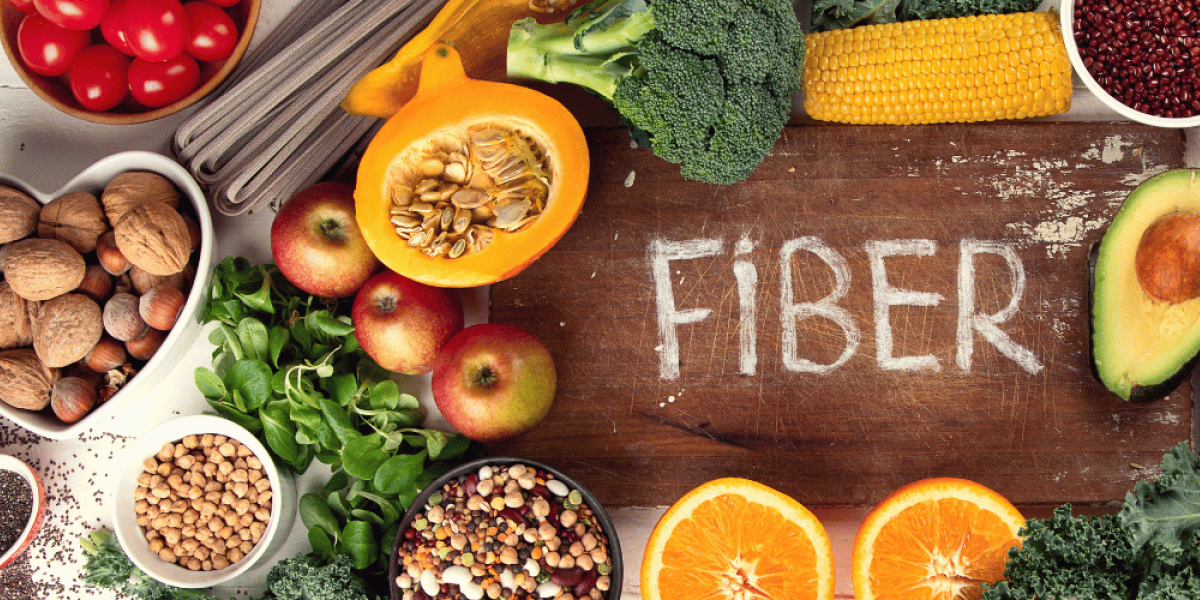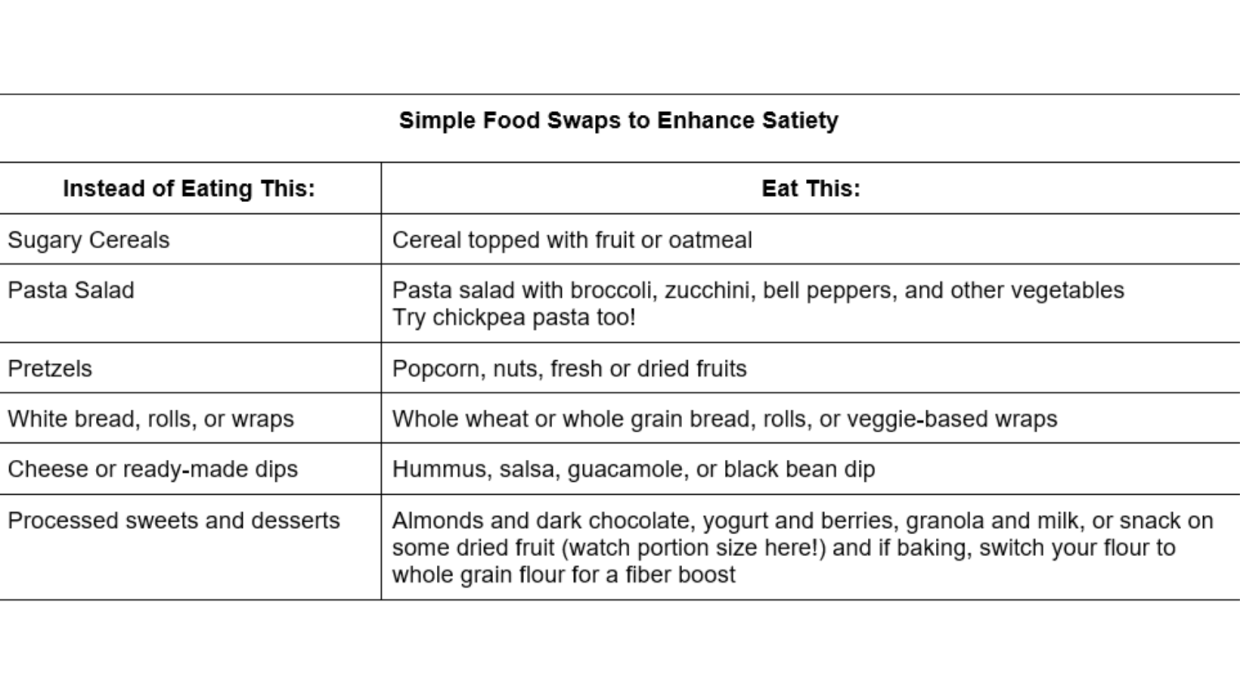
Fun With Fiber
With Valentine's Day coming up and hearts all around, it's time to give YOUR heart some love! February is heart health month and eating fiber should not be boring. With our “Fun with Fiber” handout and blog post, you’ll find simple tips for increasing fiber intake both at home and when eating out. Our nutrition team’s quick tips and simple swaps are sure to make your heart skip a beat!
What is Fiber? What are The Types?
Fiber is a type of carbohydrate that our bodies cannot digest. Fiber instead passes freely through the body. Even though fiber has major benefits and uses, we don’t get enough in our everyday diets. Fiber can be further broken down into soluble and insoluble fiber but what does that mean? (1)
Soluble fiber is able to dissolve in water and plays major roles in …
- Controlling glucose levels
- Lowering cholesterol levels
- Feeding healthy gut bacteria
- Helping with weight management
- Reducing the risk of heart disease
Soluble fiber foods include:
- Oatmeal/Oats
- Nuts & chia seeds
- Beans & lentils
- Apples
- Avocados
- Blueberries
- Carrots
- Peas
Insoluble fiber on the other hand does NOT dissolve in water and plays major roles in:
- Helping your body process waste better
- Preventing constipation & keeping you regular
- Moving food through our digestive system
- Lowering the risk of diverticular disease and colon cancer
Insoluble fiber foods include
- Leafy greens
- Cauliflower
- Potatoes & sweet potatoes
- Brown rice
- Whole wheat products
- Beans & lentils
- Almonds
- Fruits with skins (pears or apples)
Benefits of Fiber
Fiber can be beneficial in:
- Diabetes - Fiber can help control your blood sugar levels and keep you in your target range! (2)
- High blood pressure - Fiber can help control and lower blood pressure! (3)
- High cholesterol - Fiber attaches to cholesterol particles and stops them from traveling in the blood! (4)
- Satiety - Fiber helps keep you full for longer!
Increasing Fiber When Eating Out & When Cooking At Home
Increasing fiber when eating out (5):
- Pick whole grain or whole wheat bread, buns, and wraps
- Choose fruit, nuts, or salads as a side, instead of chips or fries
- Add beans to your meals if possible
- Ask for extra lettuce, onions, or tomato, instead of extra meat/cheese on burgers
- Order double vegetables with your entree instead of rice or potatoes
When cooking at home (6):
- Eat the whole fruit with its skin
- Go for brown rice instead of white
- Put some berries in your yogurt
- Add salads to your plate
- Boost nutrition in canned soup by adding more veggies
- Try high-fiber snacks like popcorn, trail mix, seeds, and nuts
- Add chia or flax seeds to your smoothies or oatmeal
* Table adapted from: https://www.todaysdietitian.com/newarchives/021115p14.shtml and Good examples of smart fiber swaps/substitutions (7,8)
Quick Notes & Fun Facts (9):
Reminder: Increase your fiber intake SLOWLY! Your body needs time to adapt to any changes to your eating habits.
Both fiber types can help:
- keep our bodies healthy
- keep you feel fuller for longer
- reduce the risk of diseases (heart disease, obesity, diabetes, metabolic syndrome, and many more
Sprouted grains, beans, and prunes are good sources of both soluble and insoluble fiber. (10)
Resources:
1. Fiber. The Nutrition Source. https://www.hsph.harvard.edu/nutritionsource/carbohydrates/fiber/. Published April 26, 2022. Accessed January 18, 2023.
2. Fiber: The CARB that helps you manage diabetes. Centers for Disease Control and Prevention. https://www.cdc.gov/diabetes/library/features/role-of-fiber.html. Published June 20, 2022. Accessed January 18, 2023.
3. Fiber stalls high blood pressure. WebMD. https://www.webmd.com/hypertension-high-blood-pressure/news/20020515/fiber-stalls-high-blood-pressure. Published May 15, 2002. Accessed January 18, 2023.
4. Jennifer Moll PD. Get info on how soluble fiber can lower your blood cholesterol levels. Verywell Health. https://www.verywellhealth.com/insoluble-or-soluble-fiber-which-lowers-cholesterol-697724. Published July 2, 2021. Accessed January 18, 2023.
5. RD A. 3 tips for more fiber on your restaurant plate. American Institute for Cancer Research. https://www.aicr.org/resources/blog/3-tips-for-more-fiber-on-your-restaurant-plate/#:~:text=Choose%20Beans%20–%20small%20but%20mighty,veggie%20soups%20or%20to%20salads. Published July 7, 2020. Accessed January 18, 2023.
6. Shereen Lehman MS. 14 simple ways to increase your fiber intake. Verywell Fit. https://www.verywellfit.com/why-your-body-needs-fiber-2505934. Published September 27, 2022. Accessed January 18, 2023.
7. Fiber: Fiber's link with satiety and weight control. Today's Dietitian. https://www.todaysdietitian.com/newarchives/021115p14.shtml. Accessed January 18, 2023.
8. Finding more fiber-rich foods when eating out. Fiber Facts. https://www.fiberfacts.org/finding-more-fiber-rich-foods-when-eating-out/. Published February 6, 2019. Accessed January 18, 2023.
9. Soluble and insoluble fiber: Differences and benefits. Medical News Today. https://www.medicalnewstoday.com/articles/319176#what-are-the-benefits-of-fiber. Accessed January 18, 2023.
10. Fisher L. Your body needs soluble and insoluble fiber-here's the difference, and how to get both from Healthy Foods. Real Simple. https://www.realsimple.com/health/nutrition-diet/healthy-eating/soluble-fiber-vs-insoluble-fiber#:~:text=Prunes%2C%20dried%20plums%2C%20and%20prune,large%20intestine%2C%22%20Gorin%20says. Published November 14, 2022. Accessed January 18, 2023.
